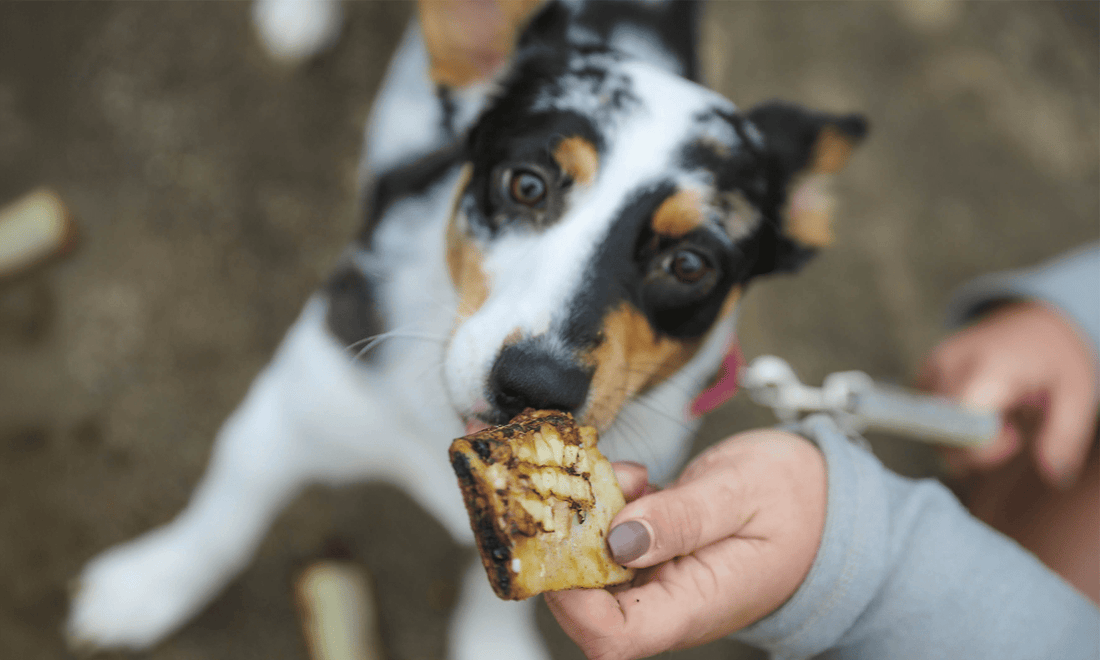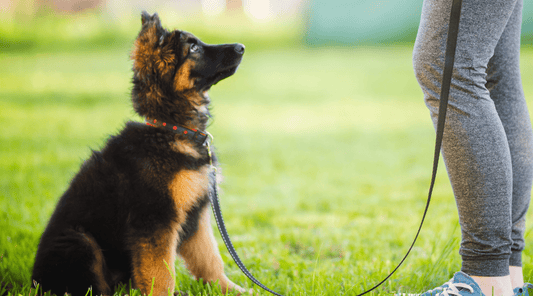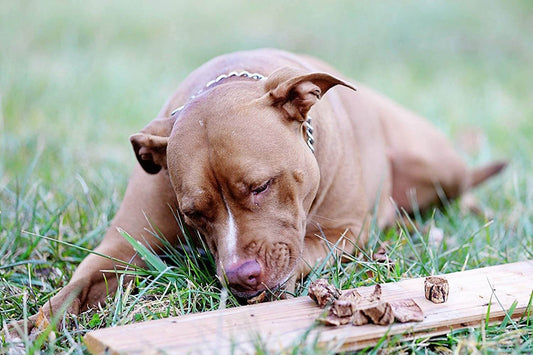
Is Rawhide Safe for Dogs? What I Found Out Floored Me
Dawn Miller Sep 04, 20245 Minute ReadLast weekend, while chatting with a fellow dog mom at the local dog park, we stumbled onto a hot topic—Is rawhide safe for dogs? She’d just found her Labrador gnawing on a piece of rawhide he’d dug up from who-knows-where, and it got us both thinking:
Aside from the fact that she didn't know the origin of this rawhide dog bone-shaped chew toy her dog picked up somewhere, does rawhide itself seem to be the natural and safe dog treat it seems to be?
What’s in Rawhide? I Was Shocked
You probably guessed that rawhide comes from the skin of an animal. That makes it sound very natural. A dog might even eat animal skin in the wild, after all.
While doing a little research, I found that rawhide is made from the inner layer of animal hides, usually from cows or horses. So far, so good.
While it’s marketed as a natural chew, the process of turning hides into those familiar rawhide bones for dogs is anything but. It often involves chemicals like bleach and preservatives, raising some red flags for me, personally. This rawhide is then shaped into what looks like a dog bone.
Now, it's true that dogs in the wild might eat some of the skin of an animal if they're really hungry. But canines really want the meat and the sweet marrow-filled bones under the skin.
So, are natural rawhide bones good for dogs? The answer isn’t so straightforward.
Is Raw Hide Safe for Dogs?
Although many dogs enjoy rawhide chews, there are some significant risks that neither I nor my friend were comfortable with:
- Choking Hazards: Rawhide can become soft and gooey as your dog chews, which can create large pieces that may get stuck in the throat or digestive tract.
- Digestive Issues: If swallowed in chunks, rawhide can cause blockages that might require surgical intervention. If they happen to have sharp edges, they could cause a dangerous perforation in the thin intestinal wall.
- Chemical Exposure: The chemicals used to process rawhide can sometimes lead to adverse reactions or long-term health concerns.
- Aggressive Chewers Destroy Them: These bones don't last even a few minutes with my aggressive chewers. They break the bone and then start trying to swallow the chunks. So, I don't feel like I'm getting my money's worth for a few minutes of chew time.
These risks make me cautious about offering rawhide to my dogs, especially when safer and more natural options are available.
Rawhide Nutrition...or Lack Thereof
Now, when it comes to health, I know sometimes I have to balance the pros and cons. If rawhide were the epitome of dog nutrition, then maybe I'd be willing to accept some of the risks.
But that just isn't the case with rawhide.
The nutritional value is minimal at best. It has some protein and fiber. Not much in the way of vitamins and no healthy fats. Its nutritional profile can't even compare to natural dog bones like beef marrow bones. Grass-fed dog bones are rich in protein, vitamins, and healthy fats. In comparison, rawhide primarily serves as a chew toy rather than a source of nutrition. It's good for cleaning teeth and fleshing breath. I'll give it that. But that's about it.
So, if you're looking for the best chew bones for dogs that provide both enjoyment and essential nutrients, rawhide might not be the safest or best choice.
Are Rawhide Chews Dangerous for Dogs? No. American Kennel Club (akc.org) agrees with me on this.
Is it healthy for dogs? No, raw hide is not even close.
Are they going to choose a rawhide bone over a meaty beef marrow bone? Let's find out!
As I was sitting on that park bench with my friend, I had a sudden realization. I just happened to have one of the best chew bones for dogs in my backpack. I opened the pack and pulled it out. My friend's dog instantly dropped that raw hide bone and came running for a better dog bone chew experience.
So what did I give her dog? And why is it so much safer and better than rawhide?
Safer Alternatives to Rawhide Dog Bones
So, what’s a dog parent to do? Thankfully, there are plenty of bones for dogs that are just as satisfying to chew without the risks.
Natural Dog Bones
I gave her labrador a dog bone that was sourced from grass-fed cattle raised in the USA. These best chew bones for dogs are not only safer but also packed with nutrients:
- Collagen, the structural protein dogs and people use to build skin, bones, joints, and more
- Glucosamine and chondroitin for joint health. I replaced my dogs' joint supplements with dog bones a few years back
- Vitamins A, E, and B12, among others. Dogs that have to eat rawhide are missing out on all of this nutrition
- Healthy fats, including a lot of omega-3
Marrow Bones
Marrow bones are beef dog bones that still have the sweet, nutritious bone marrow inside. This is the source of most of the nutrients, so it's important. When those marrow bones come from grass-fed herds, that marrow is even more nutritious. It has less saturated fat and more of the good stuff listed above.
Unlike rawhide bones that aggressive chewers destroy in minutes, marrow bones last a long time. My dogs get multiple chewing sessions out of one dog bone. And when the bone marrow is finally gone, I can even refill it using my free marrow refill guide.
Raw-hide Free Chews
The best rawhide-free chews are either going to be grass-fed marrow-filled bones or grass-fed organ meats. They serve a different purpose.
First of all, dog bones are important for a dog's dental health. That gnawing action removes plaque and tartar. It's also important for my dog's mental health. Chewing on all-natural beef bones is instinct for a dog. I scroll through social media or read the latest mystery thriller when I'm bored. Dogs chew on bones. Chewing on bones eases their anxiety and entertains them. My dogs get to chew on their dog bones for 15-20 minutes a few times a week.
These are treats, after all. I don't want to spoil their dinner.
Then, I buy beef lung bites and beef trachea treats when I want to give them a quick treat. These make the perfect training treats in place of those sugary training treats I used to buy. I also use them to get my dog to drop their marrow bones after their 20 minutes is up. I can then take it away safely, freeze it, and then give it to them again later.
I always keep a variety of marrow bones and bites on hand. The ones I buy have a shelf life of 2 years. That's why I just happened to have one in my backpack at the park that day. I never know when one of my dogs might need some chew time. I'm so glad I had it because after my friend's dog dropped that nasty rawhide bone, we put it in the trash. Rawhide is not safe for her dogs or mine. All-natural dog bones are better in every way.Available On:





